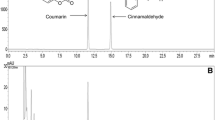Abstract
The DNA repair host-mediated assay, in which repairable DNA damage is determined in E. coli cells present in various organs of mice exposed to genotoxic agents, was further developed to broaden the range of organs under study and to simplify the procedure of assessing differential bacterial cell survival. A pair of derivatives of E. coli K-12 strain 343/113 was constructed which differed vastly in DNA repair capacity (uvr +/rec + vs uvrB/recA), as a means of assessing DNA damaging effects; furthermore, the strains differed in their ability to ferment lactose (Δ Lac vs Lac +), so that the individual survival of both strains could be determined on a single agar medium (containing neutral red as pH indicator), on which the strains had different colony colour morphology (red, Lac + vs white, Lac − colonies). Finally, the strains were made streptomycin-dependent, to prevent uncontrolled growth of the bacterial cells within the various organs and also to inhibit contamination of the survival agar medium by representatives of the normal intestinal microflora.
The experimental procedure consisted of injecting mixtures of stationary cells of the two strains (ca. 3–5×108 viable cells per mouse) both intravenously and orally into mice, either pretreated or subsequently treated with test chemicals. Ninety minutes after injection of the bacteria, the liver, spleen, lungs, kidneys, stomach, intestine, colon, and ca. 50 μl blood, were removed, suspended in buffer, homogenized, and the survival of the two strains determined on neutral red agar supplemented with streptomycin.
In preliminary experiments in which the mice were treated with intraperitoneal injections of mitomycin C (0–2.0 mg per kg body weight), a dose-dependent increase in DNA damaging activity was induced in bacterial cells present in all organs tested, the lowest effects being observed in kidneys and lungs, and the highest in liver and blood. These results need further confirmation in more extensive tests, but they do nevertheless clearly indicate the possible usefulness of the DNA repair host-mediated assay as a rapid biological dose monitor for obtaining information on the genotoxic activity in vivo of compounds for which long-term mutagenicity and carcinogenicity data are not yet available.
Similar content being viewed by others
References
Aaron CS, van Zeeland AA, Mohn GR, Natarajan AT, Knaap AGAC, Tates AD, Glickman BW (1980) Molecular dosimetry of the chemical mutagen ethyl methanesulfonate; Quantitative comparison of mutation induction in Escherichia coli K-12, V79 Chinese hamster cells and L5178Y mouse lymphoma cells, and some cytological results in vivo and in vitro. Mutat Res 69: 201–216
Ashby J (1983) The unique role of rodents in the detection of possible human carcinogens and mutagens. Mutat Res 115: 177–213
Brouwer J, van de Putte P, Fichtinger-Schepman AMJ, Reedijk J (1981) Base-pair substitution hotspots in GAG and GCG nucleotide sequences in Escherichia coli K-12 induced by cis-diamminedichloroplatinum. Proc. Natl Acad Sci USA 78: 7010–7014
Elespuru RK, White RJ (1983) Biochemical prophage induction assay: A rapid test for antitumor agents that interact with DNA. Cancer Res 43: 2819–2830
Goldstein BP, Nielsen E, Berti M, Bolzoni G, Silvestri LG (1977) The mechanism of action of nitro-heterocyclic antimicrobial drugs. Primary target of 1-methyl-2-nitro-5-vinylimidazole is DNA. J Gen Microbiol 100: 271–281
IARC (1980) Long-term and short-term screening assays for carcinogens: a critical appraisal. International Agency for Research on Cancer, Lyon
ICPEMC (1982) Mutagenesis testing as an approach to carcinogenesis, Committee 2 Report, Elsevier, Amsterdam
Iyer VN, Szybalski W (1963) A molecular mechanism of mitomycin action: Linking of complementary DNA strands. Proc Natl Acad Sci USA 50: 355–362
Kerklaan P, Mohn G, Bouter S (1981) Comparison of the mutagenic activity of dialkylnitrosamines in animal-mediated and in vitro assays using an Escherichia coli indicator. Carcinogenesis 2: 909–914
Kerklaan P, Bouter S, Mohn G (1983) Activation of nitrosamines and other carcinogens by mouse-liver S9, mouse hepatocytes and in the host-mediated assay produces different mutagenic responses in Salmonella TA 1535. Mutat Res 110: 9–22
Kilbey BJ, Legator M, Nichols W, Ramel C (1984) Handbook of mutagenicity test procedures. Second edition, Elsevier, Amsterdam
Leifer Z, Kada T, Mandel M, Zeiger E, Stafford R, Rosenkranz HS (1981) An evaluation of tests using DNA repair-deficient bacteria for predicting carcinogenicity and genotoxicity. Mutat Res 87: 211–297
Mohn GR (1981) Bacterial systems for carcinogenicity testing. Mutat Res 87: 191–201
Mohn GR, Ong TM, Callen DF, Kramers PGN, Aaron CS (1979) Comparison of the genetic activity of 5-nitroimidazole derivatives in Escherichia coli, Neurospora crassa, Saccharomyces cerevisiae, and Drosophila melanogaster. J Environ Pathol Toxicol 2: 657–670
Mohn GR, Guijt N, Glickman BW (1980) Influence of DNA adenine methylation (dam) mutation and of plasmid pKM 101 on the spontaneous and chemically induced mutability of certain genes in Escherichia coli K12. Mutat Res 74: 255–265
Mohn GR, Kerklaan PRM, ten Bokkum-Coenradi WPC, ten Hulscher TEM (1983) A differential DNA-repair test using mixtures of E. coli K12 strains in liquid suspension and animal-mediated assays. Mutat Res 113: 403–415
Mohn GR, Kerklaan PRM, van Zeeland AA, Ellenberger J, Baan RA, Lohman PHM, Pons FW (1984) Methodologies for the determination of various genetic effects in permeable strains of E. coli K-12 differing in DNA repair capacity. Quantification of DNA adduct formation, experiments with organ homogenates and hepatocytes, and animal-mediated assays. Mutat Res 125: 153–184
Norpoth KH, Garner RC (1980) Short-term test systems for detecting carcinogens. Springer, Berlin Heidelberg New York
Serres FJ de, Ashby J (eds) (1981) Evaluation of short-term tests for carcinogens. Elsevier/North-Holland, Amsterdam
Specht I (1965) Die (λ)-Phageninduktion und ihre Anwendung zur Prüfung von Carcinostatika. Arch Mikrobiol 51: 9–17
Author information
Authors and Affiliations
Rights and permissions
About this article
Cite this article
Mohn, G.R. The DNA repair host-mediated assay as a rapid and sensitive in vivo procedure for the determination of genotoxic factors present in various organs of mice. Arch Toxicol 55, 268–271 (1984). https://doi.org/10.1007/BF00341024
Received:
Accepted:
Issue Date:
DOI: https://doi.org/10.1007/BF00341024




